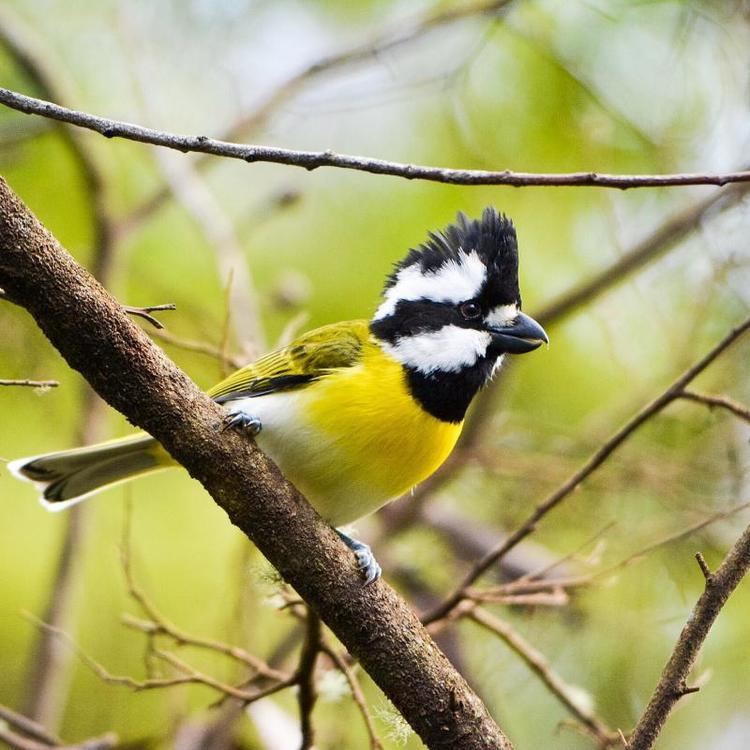Kingdom Animalia Order Passeriformes Family Pachycephalidae Scientific name Falcunculus frontatus Rank Species | Phylum Chordata Suborder Passeri Genus Falcunculus Higher classification Falcunculus | |
 | ||
Similar Bird, Rufous whistler, Grey shrikethrush, Shrikethrush, Dusky woodswallow | ||
The crested shriketit (Falcunculus frontatus), or Australian shriketit, is a bird endemic to Australia where it inhabits open eucalypt forest and woodland. It is the only species contained within both the subfamily Falcunculinae and the genus Falcunculus.
Contents
Taxonomy and distribution
The crested shriketit was first described by the English ornithologist John Latham in 1801 under the binomial name Lanius frontatus. Nuclear gene sequencing suggests that the crested shriketit and the wattled ploughbill may require their own family, Falcunculidae (Dickinson 2003).
Subspecies
Three subspecies are recognized, with disjunct ranges and sometimes considered full species:
Description
Males are larger than females in wing length, weight, and bill-size. Males have black throats, while females have olive green.
Behaviour
It feeds mainly on insects, spiders and, sometimes, particularly during the breeding season, young birds. Thistles are also taken. It has a parrot-like bill, used for distinctive bark-stripping behaviour, which gains it access to invertebrates.
Status and conservation
The eastern shriketit is evaluated as being of least concern on the IUCN Red List of Threatened Species, the northern shriketit is considered endangered, and the western shriketit is listed as near threatened. Both the northern and western crested shriketits suffer from habitat loss and fragmentation.
